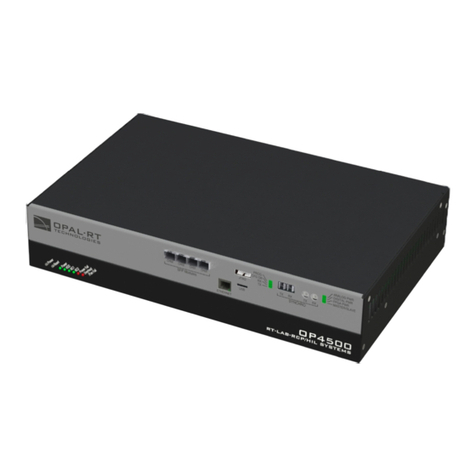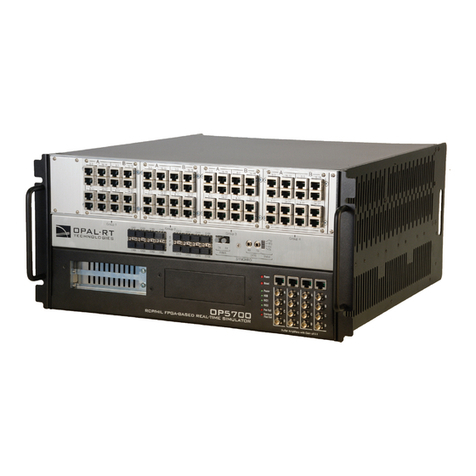
OP4200 User Manual OPAL-RT Technologies 5
CONTENTS
DESCRIPTION......................................................................................................................................... 7
FEATURES .......................................................................................................................................... 7
I/O CONFIGURATIONS ........................................................................................................................ 7
SYSTEM INTERCONNECTION DETAILS ............................................................................................ 8
OP4200 HARDWARE .............................................................................................................................. 9
RECEIVING AND VERIFICATION ........................................................................................................ 9
STANDARD HARDWARE ..................................................................................................................... 9
OptiOnal Hardware .............................................................................................................................................9
HARDWARE INTERFACE .................................................................................................................. 10
Side COnneCtOrS ...............................................................................................................................................10
FRONT CONNECTORS ..................................................................................................................... 11
CASSETTES ....................................................................................................................................... 12
CaSSette ledS ................................................................................................................................................. 12
BASIC INSTALLATION ....................................................................................................................... 13
GENERAL CABLING INSTRUCTIONS .............................................................................................. 13
COnneCt tHe pOwer Cable ...............................................................................................................................13
COnneCting tHe grOund SCrew .........................................................................................................................14
COnneCting netwOrk Cable .............................................................................................................................. 14
INITIAL SETUP ................................................................................................................................... 15
dip SwitCH COnfiguratiOnS ...............................................................................................................................15
CHanging tHe ip addreSS ..................................................................................................................................16
teSting SignalS uSing tHe lOOpbaCk kit ............................................................................................................19
PIN ASSIGNMENTS .......................................................................................................................... 20
TROUBLESHOOTING HARDWARE SETUP ..................................................................................... 21
OP4200 HARDWARE - CASSETTES.................................................................................................... 23
OP4230-1 16 ANALOG OUTPUTS .................................................................................................... 23
featureS ......................................................................................................................................................23
deSCriptiOn ................................................................................................................................................ 23
SCHeMatiCS ..................................................................................................................................................23
tYpiCal appliCatiOnS ............................................................................................................................... 24
OP4240-1 16 ANALOG INPUTS ........................................................................................................ 25
featureS ......................................................................................................................................................25
deSCriptiOn ................................................................................................................................................ 25
SCHeMatiCS ..................................................................................................................................................25
OP4242-1 16 ANALOG INPUTS ........................................................................................................ 26
featureS ......................................................................................................................................................26
deSCriptiOn ............................................................................................................................................... 26
SCHeMatiCS ..................................................................................................................................................26






























